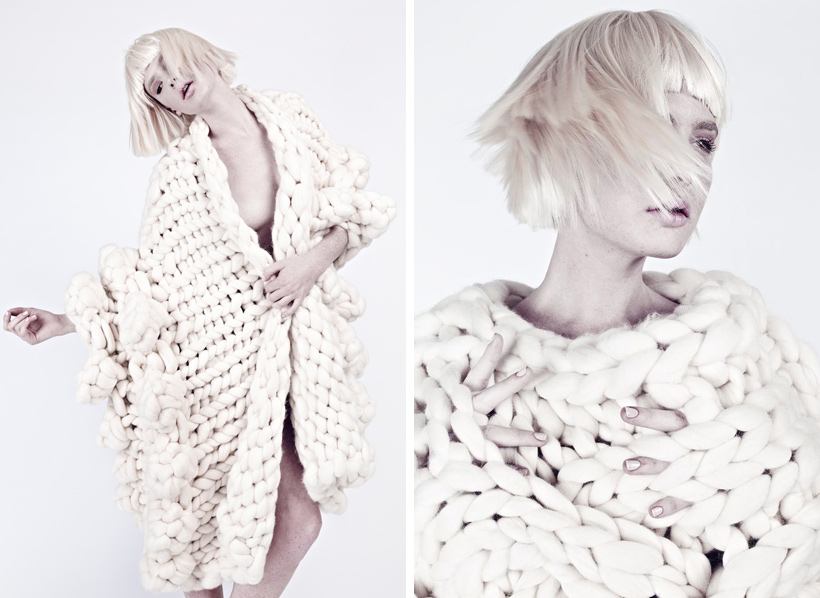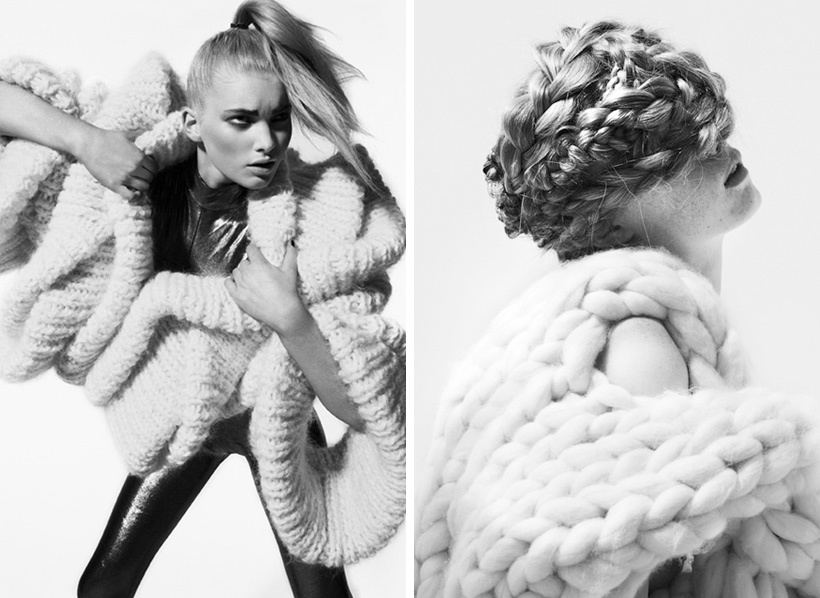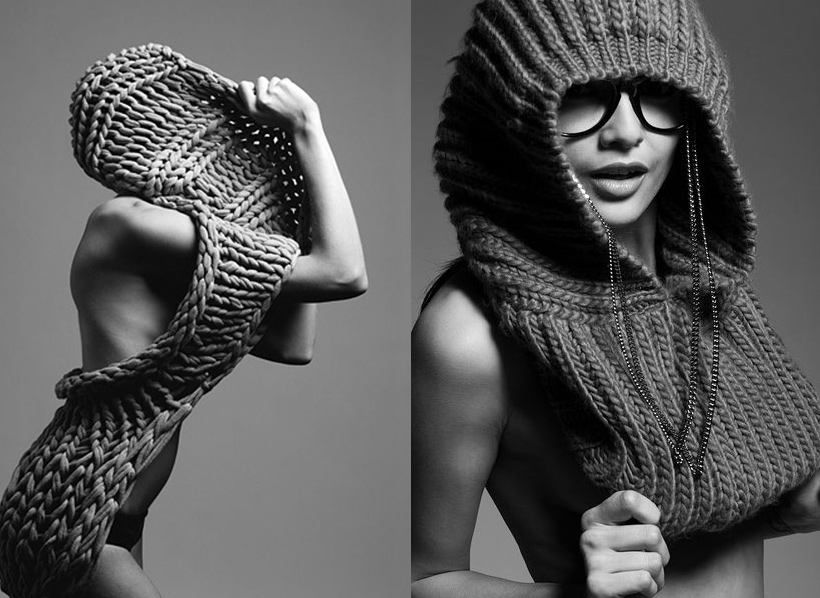Designer’s experimental techniques on knitwear
Today knitwear is once again taking up a prominent place in the wardrobe, as we can see from a number of trends preview and from runaway collections, thanks to a new generation of Knit designers that are growing and experimenting with new techniques. Collections where the leitmotif is the lightness, irregularity and structure of the fibers. Craft and natural elements are revisited in a high-tech key. The lightness that characterized the weights of summer yarns remains, but it takes on volume and bulk, and becomes soft and fluffy thanks to yarns that recall the allure of fur. A new, fuzzy, brushed and compact comfort made from uneven yarns that are malfilé¹ like a soft, delicate and comfortable cocoon. Soft surfaces, like impalpable plush, fur-effects, interwoven long-pile materials, soft, noble, natural but also delicate wools. A fairy-tale world where naturalness and refinement are always linked. The international knitscape is today more inovative also attempting to explore all many technical options and the ability of fibers to offer a new type of modernity. Minimalism is revisited with a warmer, more human feel, with soft, delicate yarns.
Mohair² is ubiquitous. Simplicity is softened to create a general effect of peace and harmony. The gentleness of the mohair is also revealed through the poetic combination of colors in the macro bouclé.In this journey through knitwear Italy is playing a crucial role since almost the 80% of worlwide knitwear is produced in throughout several Italian regions: a geography that is split into various areas, which may be referred to as truly highly specialised districts. From luxury maisons, like Chanel to avant-garde designer like Rick Owens or Gareth Pugh, everybody is producing the most sophisticated knits in Italy. From a historical point of view, Lombardy and Piedmont have played a major role, Veneto is the region with a tradition of a medium-high knitwear product.
Umbria boasts high and widespread quality, also in its numbers, specialised in a traditional product and in cashmere (a prime example is the success of Brunello Cucinelli), whilst Carpi initially concentrated on a lower end and economical knitwear product, raising the quality level in the 1980s to keep up with the competition. The territory boasts numerous businesses covering various segments, including the lowest ones, produced in Prato and Signa in Tuscany, to arrive at the most basic ones produced in Barletta.
Running parallel with this growth of knitwear, a new generation of talents is arising and Italy is the country driving the development of this exciting new trend. To know more, look for our next post on rising Italian talents.
Author: Federico Poletti – Thanks to Maglifico, the Knit Journal.
Photo source: Pinterest #knitwear
…………….
¹Malfilè: it’s an imperfect yarn that produces irregular effects.
²Mohair: it’s a luxury fiber made from the hair of Angora goats, a beautiful, incredibly warm and durable yarn.


